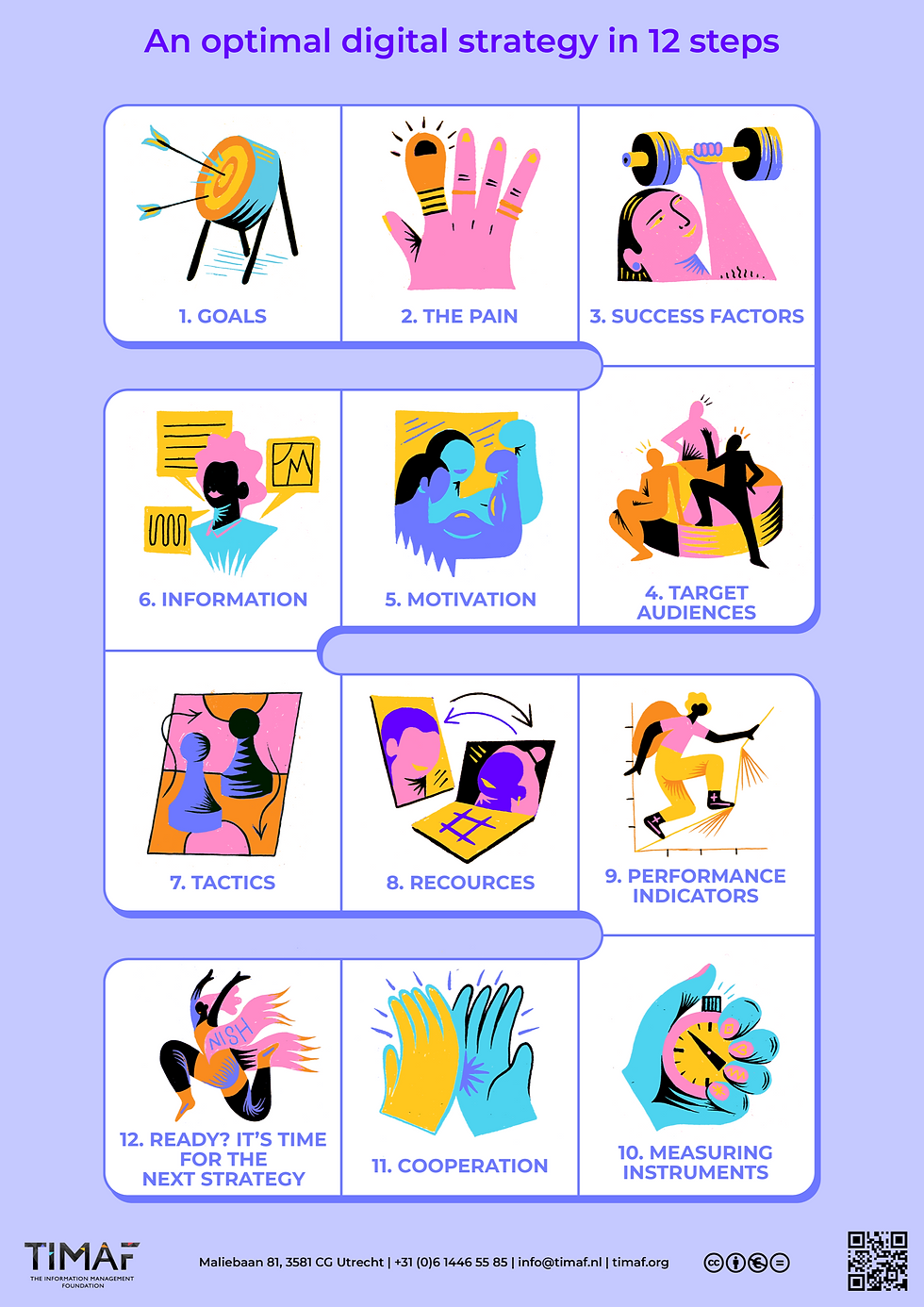A good strategy always has these three key elements
- Erik Hartman

- Sep 7, 2023
- 3 min read
Organisations tend to call many things a 'strategy'. But often it is not a strategy at all. Fake strategies like these pollute digital transformation and gobble up huge amounts of energy, money and time. With no or even negative results. This has to stop.

It is helpful if you can distinguish a good strategy from something that is not a strategy at all or is a bad strategy at best. I wrote in a previous post that a strategy always solves a problem. But there are two more elements that make a strategy a (good) strategy.
Three key elements of a strategy
In his book Good Strategy, Bad Strategy - The Difference and Why It Matters, Richard P. Rumelt lists the three core elements of a good strategy:
A diagnosis of the problem.
A guiding policy to solve this problem.
A set of coherent actions.
A strategy can contain more, but without these three core elements, it can never be a good strategy.
"I call this combination of three elements the kernel to emphasise that is is the bare-bone centre of a strategy - the hard nut at the core of the concept". Richard P. Rumelt
Hold these three core elements up against your organisation's strategy for a moment. Are two or three missing: this is not a strategy! Is one missing: see if this is fixable. And then check whether the three core elements have been properly incorporated, because that is also often lacking.
A strategy solves a problem
The first core element of a good strategy is a diagnosis that defines the nature of the challenge. This diagnosis focuses on the most critical aspects of the challenge.
A good strategy always (!) solves a problem. Without a good diagnosis of the problem, it is not possible to solve the problem. You probably know the expression: "The wrong solution for the wrong problem." People think they understand the problem and the solution is actually already there. Many digital transformations fail grandiosely because of this.
Guiding policies
A strategy is more than just a diagnosis of the problem. A solution, or at least the best way to deal with the challenge, must be worked on. This requires a special approach to the problem.
"The guiding policy outlines an overall approach for overcoming the obstacles highlighted by the diagnosis." Richard P. Rumelt
The policy does not detail what should be done, but provides a method for dealing with the situation in a coherent manner. In which it mainly indicates what not to do.
A set of coherent actions
Diagnosis and policy alone will not get you there. Many strategies 'die in beauty': no action follows. In these cases, the third key element is missing: a set of coherent and coordinated actions.
"Strategy is about action, about doing something." Richard P. Rumelt
Do not confuse this with a detailed plan of attack. The approach may change, but each action is in the light of solving the problem. It is essential here that the actions follow a coherent pattern. This requires coordination within the organisation, ideally provided by a (delegated) 'owner' of the strategy.
New book: 'Strategy in digital transformation'
You can find more explanations and examples of the core elements of a strategy in my new book 'Strategy in digital transformation'. The e-book will be published in October and later the paper version.
This will be a read-and-do book that will help you successfully create, share, implement, measure and optimise digital strategies.

In each case, you will find the TIMAF strategy game, 10 worked-out examples and many exercises. With the poster digital strategy and game cards, it becomes a real do-book. The idea is that, based on the book, you can start creating a digital strategy yourself.
Create a digital strategy in 12 steps
A digital strategy is a preconceived plan that identifies how the organisation can better achieve organisational goals with the optimal use of digital assets.

To help organisations with their digital strategy, TIMAF developed the digital strategy game that allows you to create a digital strategy in 12 steps.
You can apply this game directly in a workshop with colleagues, customers and suppliers.
The 12 steps of the digital strategy game have been brought together on a poster.
You can request the free Digital Strategy poster and share it with your colleagues.





Comments